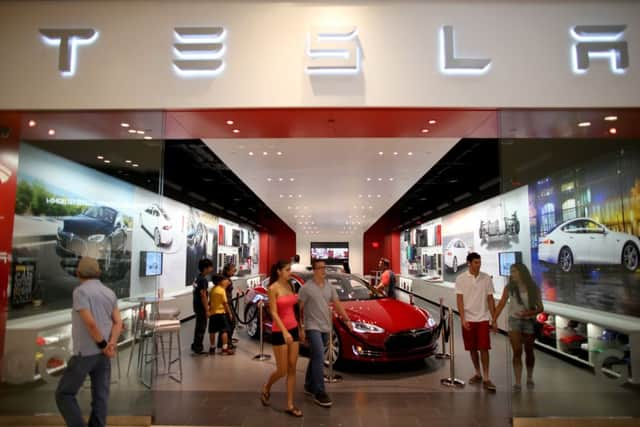Scots scientists' battery breakthrough could revolutionise electric cars
Researchers at the University of Glasgow have adapted nano-molecules so they are able to store either electric power or hydrogen gas, creating a flexible dual-output battery system.
The energy released can take the form of electricity or gas – meaning that the system could be used flexibly in situations that might require fuel or electric power.
Advertisement
Hide AdAdvertisement
Hide AdThe team of chemists says the breakthrough could lead to electric cars being charged in seconds, as the nano-molecules can be contained in a pumpable liquid.


This could mean that the battery of an electric car could be “recharged” in roughly the same length of time as petrol cars are today, with the old battery liquid being removed simultaneously.
The research, published in the journal Nature Chemistry, was led by Professor Leroy Cronin, the University of Glasgow’s Regius Chair of Chemistry.
“For future renewables to be effective, high capacity and flexible energy storage systems are needed to smooth out the peaks and troughs in supply,” he said.
“Our approach will provide a new route to do this electrochemically and could even have application in electric cars where batteries can still take hours to recharge and have limited capacity.
“Moreover, the very high energy density of our material could increase the range of electric cars, and also increase the resilience of energy storage systems to keep the lights on at times of peak demand.”
Research published by the AA last month suggests attitudes to electric cars are changing.
Half of young people in the UK said they would like to own one compared with only a quarter of their parents.
Advertisement
Hide AdAdvertisement
Hide AdHowever, the survey also found that more than two thirds (67 per cent) of people think electric vehicles take too long to charge, while 85 per cent wanted more public charging points.
The Scottish Government has announced plans to phase out petrol and diesel cars by 2032 and has introduced an electric vehicle loan scheme to encourage drivers to take up environmental motoring.
The scheme had to be closed early this year after being oversubscribed and plans are being considered for expanding it next year.
The scheme was launched in 2011 and the first few years of its existence saw a very low take-up with just 12 loans being issued in 2012/13 and six the following year.
However, the number of successful applications had increased almost every year since its launch.
According to figures published by the RAC Foundation in December, charge points across Scotland were used 37,433 times during August 2017, compared with 26,119 times in the same month a year earlier.
A year before that, in August 2015, there were 12,939 charging sessions.